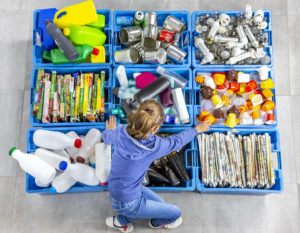

Big feelings can mean big behaviours! These counsellor-recommended children’s books help kids manage their feelings (and help behavior)
When children experience “big feelings” they often express these through “big behaviours”. It is often the latter that we as parents will focus upon. If we consider the classic iceberg metaphor, what we see externally in our children is probably not half as big as what lies beneath the surface. Or maybe we do know what lurks there but we don’t know how to tap into it in the right way, especially if our children are quite young and we might prefer to leave it alone. Many parents will fear opening up discussions for fear of getting it wrong and therefore avoid them completely, but as Dr Roby Marcou, a Developmental and Behavioural Paediatrician here in Singapore, advocates, “I think that as parents starting to talk with their children, it is helpful to keep in mind the need to normalise and empathise, to say that we all feel like this sometimes… or maybe ‘I remember when I felt this way’”.
Having a narrative segue into the conversation may open up these possibilities. This round-up of books has been so helpful in my work as a school counsellor at Tanglin Trust School, that I have read some to my own children to open up conversations when straight-talking might not cut the mustard.
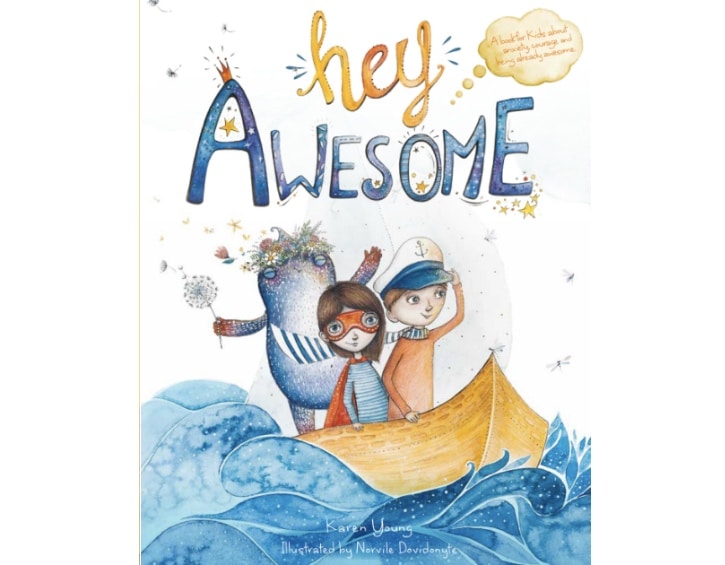

Books about Inner Strength and Bravery
We all know that people are born with different temperaments but how we deal with them or handle them as parents may be the difference between a quirk in their character and a more life-defining assumption in our children. For instance, shyness may start off as being quite a small and inconspicuous trait which we inadvertently indulge or mollycoddle when the child is little because our natural urge to protect takes over. But when more external factors come into play beyond the safe bosom of the home, these can have a bearing on how that trait can manifest, morph and grow into something less manageable. Some of the great books that I have read to open up the possibility of inner strength and bravery are:
Little Brown Bushrat by Georgie Ripper (age 3-6) is about a little a little bush rat who, compared to all his friends in the bush, doesn’t seem to have any skills of note to offer. He can’t jump the highest like the kangaroo and he can’t swim like the duck-billed platypus, but when a bush fire rips through the animal’s habitat, the little bush rat has a chance to save the day. The message is that you don’t have to always be the best, the most, or the greatest to be a somebody and maybe one day you might achieve something extraordinary.
Hey Awesome! By Karen Young (age 6- 10) is super book for older children about discovering their strengths and why the biology of emotions makes you feel the way you do. In this book, knowledge is power and who knows what strengths are lying in wait for the taking?! This is a great one for scaling your children’s inhibitions, worries and strengths, and the exercises at the back of the book provide further opportunities for checking in with your child, beyond the story.


Books About Risk-Taking and Failure
Children are much more likely to take risks and be resourceful when you walk beside them rather than take a top-down approach. If you adopt a curious observer role in their due process, their planning and their goals, you are in a better position to tackle any perfectionist traits that your child may be displaying because you are focusing more on the method rather than the end result. Neuro-biology does suggest that some people are more hard-wired for perfectionism than others but whilst we can’t change that, we can steer their life experiences in the way that we mentor, parent and role-model. One of the best ways of fostering this is by helping them understand that mistakes are not shameful or life-defining failures but rather learning moments. These are a couple of books that I think are brilliant for opening up these discussions:
Ish by Peter H. Reynolds (age 0-5) is a beautiful book both visually and in sentiment about a little boy who loves to draw but a careless remark by his older brother makes him doubt his creative flair and he loses confidence in his creations. Luckily his sister saw the world a little more ish-ly and she teaches him that there is great value in not getting things right all the time. It is a delicious parable of lighting the fires of our creativity with the freedom of expression.
What To Do When Mistakes Make You Quake: A Kid’s Guide to Accepting Imperfection by Claire A. B. Freeland (age 9-12) is more of an interactive guide for parents and children to work through using cognitive-behavioural strategies around re-framing the notion of mistakes and failures. It uses the metaphor of explorers to guide the narrative through the many twists and turns in their discoveries and how exciting possibilities are opened up through perseverance and an openness to try.


Books About Anxiety
A very broad and difficult subject to define is anxiety and how it affects our children. It is inevitable that most of us will suffer from anxiety at one point or another during our lives but it is the frequency, situational and contextual elements that perhaps differentiates it from the norm. From an evolutionary perspective we are wired to have an instinctual fear of predatorial factors to aid our survival, but from an everyday perspective if you are witnessing your child checking out of activities, withdrawing from events and otherwise healthy opportunities, perhaps crying a lot or having a heightened degree of sensitivity, you may have cause for concern. Due to the fact that anxiety is so vast and difficult to define it is hardly a mystery why our children would perhaps have a hard time explaining it themselves. So a couple of great books for tapping in those feelings are:
Jonathan James and The Whatif Monster by Michelle Nelson-Schmidt (age 3 and up) is probably one of my most used books in my therapy. It truly is fantastic for younger kids but I have even used it for some teenage students to discuss how the negative monster can have a very powerful voice in our head, questioning the ‘what if’ behind every decision. However, once Jonathan James flips the focus of the ‘what if’ to something new and exciting, it opens discussions about untapped possibilities as his script for life begins to change.
Hey Warrior! By Karen Young (age 5-12) Like Hey Awesome!, this book is a fantastic resource for providing children with an opportunity to share their experiences and realise that anxiety isn’t their fault and they have the power to take control once they understand how the brain is working. My students always enjoy naming their warrior and maybe you will, too. The book gives you a common language to explain how we are all feeling. As Dr Marcou says, sharing experiences is the first big step towards normalising and inducing empathy for what our child may be experiencing.
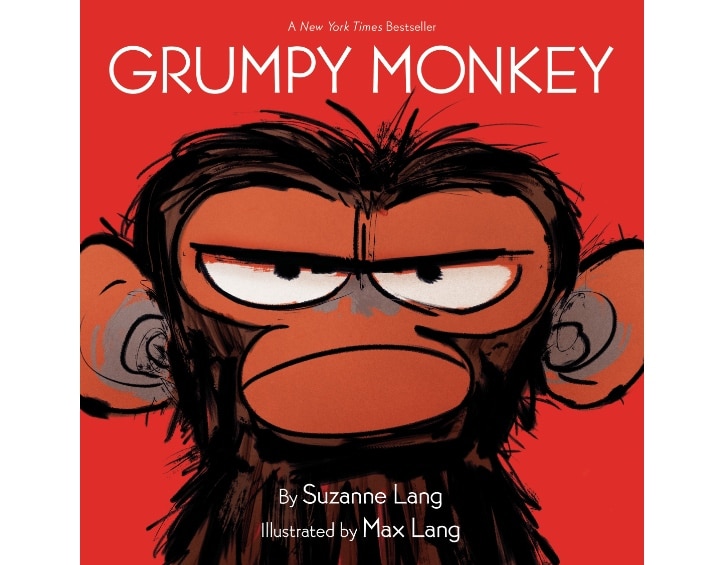

Books About Labelling and Assumptions
The characteristics our children will have are down to a number of factors, the obvious being genetics but also the circumstances they are brought up in and the influences they are exposed to. Some characteristics will obviously be more prominent that others and will possibly differ the more children that you have. Inevitably this forms the basis of comparison and perhaps even labelling. If one child is more physically able, perhaps they are known as the sporty one; if they are always clowning around, they are known as the funny one. However, if this becomes the basis of their identity in the home and at school, children may act up to the labels as they may become a self-fulfilling prophecy. If we can reframe those assumptions with acknowledgement of their place and benefit on the world’s stage alongside others, then we are more likely to instil a sense of flexibility in their emotional landscape. For instance, anger usually has a very bad press as something that we should sedate, negate and ignore, but if we treat that emotion as an obstacle, we are more likely to see those challenging behaviours emerge as your children fight to be heard. Once we start to encourage our children to channel those characteristics positively and in a safe-space the more likely we are to see a heightened emotional literacy in their response and a mutual understanding of why the feelings and behaviours are so intertwined.
Grumpy Monkey by Suzanne Lang (age 4-7) is a supremely funny and light-hearted tale but with a strong message that we shouldn’t always put on a brave face and that there are dangers in moderating our big feelings. Jim the Chimpanzee shows us that there is no shame in not being happy for the sake of it and that we can have meltdowns occasionally… and safely!
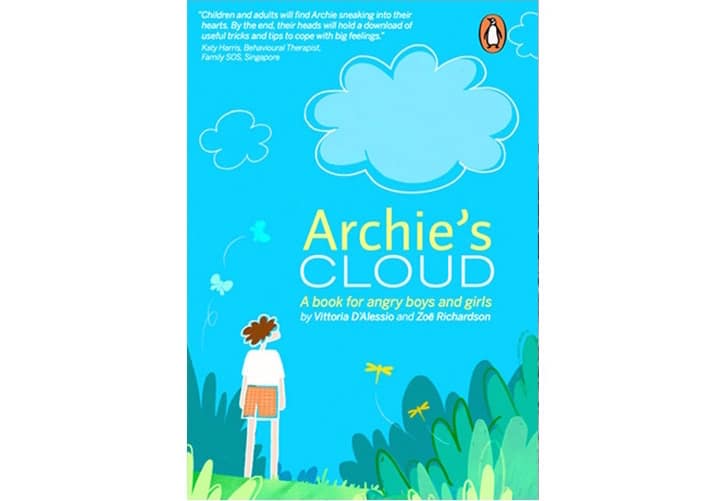

Books About Self-Regulation
A lot of these big emotions also depend on our ability to self-regulate and this term is most commonly linked with challenges such as ADHD, Autism and a range of other cognitive or socio-emotional challenges. The inability to self-regulate may be mistaken for or labelled as anger because the frustration and feelings of powerlessness strangles our child’s ability to communicate. Sometimes it might also be a by-product of exasperation and the way that their brain works. However, self-regulation is something that we all will struggle with at times, and although the next few books are geared towards a more specific challenge, there are many blurred lines in the emotional literary that these books offer to equip us with an armoury of vocabulary and opportunities for reflection.
Archie’s Cloud by Vittoria D’Alessio and Zoe Richardson (age 5-8) is one of the only long- form narratives on this list. It may be considered more difficult to marry up a delicate balance of fantasy and captivating imagery with pertinent learning moments without sacrificing the magic, but Archie’s Cloud deftly and sensitively achieves this. The book centres around Archie, a feisty and principled little boy who struggles to form relationships and moderate his big emotions. However, he has a job to do; he has to chaperone a squirmy, restless and demanding package home. Archie has no idea what is in the package or why he has to bear this burden but sticking with it will make all the difference. At the end of the book, there are some informative discussion pages “Time to Talk and Share” which you can dip in and out of to either support or supplement the narrative. The universality of the message is beautifully translatable to any child, boy or girl, who struggles with anger or anxiety and the relatability to Archie is instantly tangible.
Decibella and Her 6-inch Voice and Soda Pop Head by Julia Cook (age 5-12) both focus on skills to help young children be better communicators. Decibella struggles with her loud voice and it is beginning to impact her class and irritates others. She doesn’t know what to do until the teacher introduces her to the “5 volumes” of voice. Each voice is made much more fun to try with the word “Slurpadoodle”. Lester in Soda Pop Head is frustrated and angry a lot, and he blows his top so he needs his Dad to help him figure out his stressors and triggers in a fun and empathetic way, which in turn curbs his anger. Julia Cook has written a fantastic range of books (of which I have only featured a couple), but she, too, includes classroom-ready activities for teachers and resources for parents to create fun life- lessons at the end of all her stories.


Books About Being Different
Particularly if you have children with big challenges or a disability of some form, one of the obvious but hugely upsetting by-products of these big emotions is your child’s realisation that they are different. Whilst we are able, to a large extent, protect our children when they are little from the external forces of judgement, comparison and discrimination, we cannot prepare them for every life-scenario. In fact, the most pertinent learning moments will come from the cold harsh reality of experience. Where there is rupture, however, there is always the opportunity for repair, and if you can help validate and console your child during tough times, your connection will foster strong attachments of reassurance and comfort which are integral for firm foundations of emotional regulation.
We’re All Wonders by R. J. Palacio (age 4-8) is a picture book adapted from the long-form narrative ‘Wonder’ by the same author and is about Auggie who is an ordinary boy with a condition that means that he looks very different. It tackles his feelings about his disability and how he feels and copes with it, but mostly it taps into every child’s longing to belong, and to be seen for who they truly are. It’s the perfect way for families to talk about empathy and kindness with young children to foster that unconditional positive regard in our youngsters.
Leah’s Voice by Lori DeMonia (age 6-8) is a book for siblings who may find it hard to explain to their friends about their brother or sister’s disability and feel shame and disappointment when others are not understanding. As I mentioned in my previous article during Autism Awareness Month, siblings can be affected by their brother and sister’s disability “as much, maybe even more, than the child who is diagnosed”. This book is a beautifully sensitive story about two sisters and through kindness and devotion, one sister teaches and role-models these through her boundless acceptance and inclusive actions.


Books About Inclusion, Tolerance and Kindness
Friendships and navigating social arenas are certainly something that is common to any age or societal sphere. It can be the difference between a good day and a bad day and have a crippling impact on our confidence and emotional robustness. Often, with the benefit of experience, our abilities to cope or rationalise the ebb and flow of friendship becomes easier but occasionally the losses, misses and down-right disastrous can influence our attitudes and behaviours in relationships of any kind, going forward. In our children, this is one of the most common stressors that consume a child’s mind and the powerlessness that we feel as parents to know how far to console, step in or step out can be extremely confusing and upsetting. The three books that I have chosen for this section delve into the themes of conflict, judgement, inclusion, tolerance and kindness.
Enemy Pie by Derek Munson (age 3- 12) is another fantastic resource that I have used many times with children I have worked with. This funny yet endearing story is about a little boy who learns an effective recipe for turning a best enemy into a best friend. What is so brilliant is that it opens up an alternative way of tackling big subjects such as tolerance, inclusion and kindness without lecturing, finger-pointing or judging.
Strictly No Elephants by Lisa Mantchev (age 5-10) is about a boy who has an elephant as a pet. He wants to do normal pet things with his pet elephant like everybody else. Until one day for Pet Club, there is a sign on the door saying “Strictly no Elephants!” It truly is a beautiful story about welcoming and accepting everyone, even elephants. It opens up discussions about loyalty and that we should try and leave no one behind.
Nobody Likes Me! by Raoul Krischanitz, Rosemary Lanning (age 4-8) is quite a straightforward tale of Buddy the new dog in town who wants the other animals to play with him, but none of them agree for a reason that Buddy doesn’t understand. Finally, Buddy gains the courage to ask the animals why they don’t want to play with him and they figure out it was just a big misunderstanding, and they all become friends. It opens up discussions about assumptions that can be made if we don’t make that first brave step.


Books About Grief and Loss
One of the most inevitable but arguably most difficult conversations that we may have to have with our children is regarding grief or sadness about losing loved ones, whether they have died or are not with us anymore. Grief and loss of any kind go hand in hand and often it is a long and painful journey until we reach acceptance. Again, this is something we as parents cannot easily fix but it is also something that we shouldn’t ignore or fear talking about. Depending on the type of loss, children may need a creative or pictorial segue into what otherwise may be a very tricky thing to talk about.
The Invisible String by Patrice Karst (age 4 and up) is a beautiful and sensitive book which advocates how love is boundless and not measured by our physical contact. It is adaptable and flexible in its message to suit challenges such as a friend leaving, separation anxiety or the death of a loved one, to name but a few. Even as an adult I have found such wisdom and comfort in its words.
When Sadness Is At Your Door by Eva Eland (age 3-7) is reminiscent of Harold and the Purple Crayon by Crockett Johnson and this is a simple but visually rich book about sadness, represented by a mint-green amorphous blob, which stands outside a closed door. The book describes a little girl’s changing relationship with sadness in a gentle, matter-of-fact tone and allows opportunities for discussions about how even though we may feel sad for a while, it won’t define who we are.
The Memory Tree by Britta Teckentrup (age 3 – 10) is an absolutely stunning, compassionate, thoughtful and heartbreakingly beautiful book which helps explain the death of a loved one. Fox is old and very tired. He goes alone into the forest to lay down and sleep for the last time. All his animal friends are sad, but they all pool their memories together and something very magical happens. It teaches us that the more we remember our loved ones, the bigger our memory bank grows and in that way they will never leave us.
Whatever rupture your child is presenting, our first instinct as a parent is naturally to rush in, find a fix or to take the pain, hurt and angst away from our children. The beauty and magic of exploring so many of these big feelings through picture books and stories is that the repair can come by transporting your child into another realm of understanding. The unconscious comprehension through metaphor, imagery and narrative brings an emotional literacy and a foundational layering of self-regulatory strategies, which may benefit them far beyond their early years.






 View All
View All



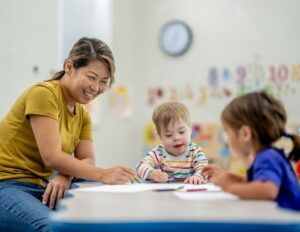

 View All
View All







 View All
View All



